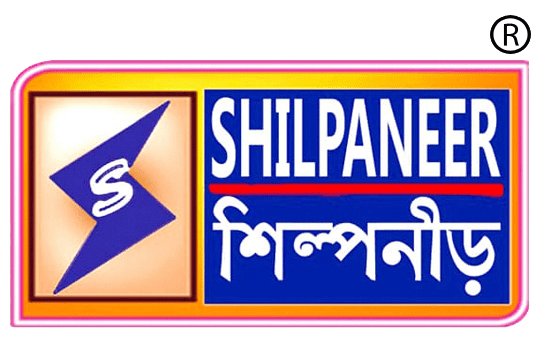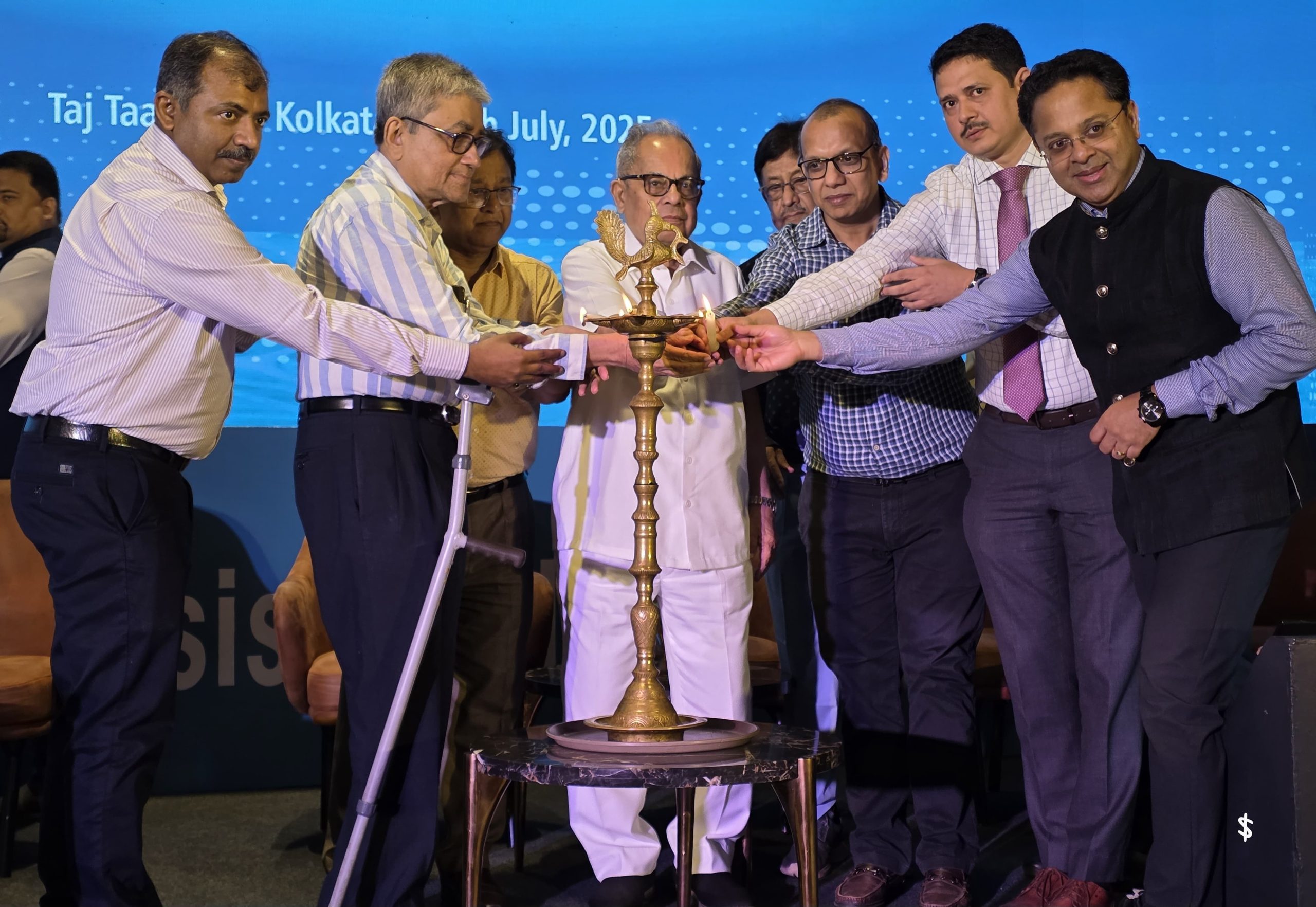দ্রুত রোগ নির্ণয় করে প্রতিরোধ করা দরকার ভবিষ্যতে বড়সড় বিপদ ডেকে আনবে
Thank you for reading this post, don't forget to subscribe!কলকাতা—২০ জুন ‘অস্টিওপোরোসিস’—হল একটি নিঃশব্দ ঘাতক বা সাইলেন্ট কিলার। যা সঠিক সময়ে নির্ণয় না হলে ভবিষ্যৎ জীবন অন্ধকারে ঠেলে দিতে পারে। অস্টিওপোরোসিস আগাম কোনও সতর্ক বার্তা দেয় না। যে কারণে যখন বড়সড় কোনও অঘটন ঘটে তখন মানুষ জানতে পারেন। হাড় ফ্র্যাকচার হলে রোগী বুঝতে পারেন যে তিনি অস্টিওপোরোসিস’–এর শিকার। হাড় ক্ষয়ে এতটাই জীর্ণ হয়ে যায় তখন বিশেষ কিছু করার থাকে না। অস্টিওপোরোসিসের খুঁটিনাটি নিয়ে ‘এশিয়ান ইনস্টিটিউট অফ ইমিউনোলজি অ্যান্ড রিউম্যাটোলজি’ (AIIR) এর উদ্যোগে রবিবার ২০ জুলাই, কলকাতার নিউটাউনে তাজ তাল কুটিরে আয়োজিত হয় ‘অস্টিওপোরোসিস ডায়লগ ২০২৫’। সহায়তায় রয়েছে অস্টিওপোরোসিস স্পেশ্যাল ইন্টারেস্ট গ্রুপ (এসআইজি), ইন্ডিয়ান রিউম্যাটোলজি অ্যাসোসিয়েশন।
‘অস্টিওপোরোসিসকে কেন নিঃশব্দ ঘাতক বলা হচ্ছে, সময় থাকতে কি করণীয়, কিভাবে প্রতিরোধ করা সম্ভব, শরীরের বিভিন্ন অংশে কীভাবে ক্ষতিকর প্রভাব ফেলে অস্টিওপোরোসিস?—এই সমস্ত বিষয়ের ওপর আলোকপাত করেন চিকিৎসকরা। গত বছর এই রকম অনুষ্ঠান হলেও শুধুমাত্র অস্টিওপোরোসিসকে বিশেষ গুরুত্ব দিয়ে কলকাতায় এই রকম অনুষ্ঠান প্রথমবার আয়োজিত হল এশিয়ান ইনস্টিটিউট অফ ইমিউনোলজি অ্যান্ড রিউম্যাটোলজি–এর উদ্যোগে। কারেন্ট ট্রিটমেন্ট স্ট্র্যাটেজিস ফর অপটিমাইজিং বোন হেলথ, ওবেসিটি অ্যান্ড বোন হেলথ, অস্টিওপোরোসিস ফ্র্যাকচারস–অ্যান্ড অর্থোপেডিক পয়েন্ট অফ ভিউ, বোন হেলথ ইন ডায়াবেটিস, প্রি–মেনোপজাল অস্টিওপোরোসিস সহ ১০টি গুরুত্বপূর্ণ বিষয় নিয়ে আলোচনা করেন বিশেষজ্ঞরা।
কলকাতার স্বনামধন্য বিশেষজ্ঞ চিকিৎসকরা অস্টিওপোরোসিস ডায়লগ ২০২৫ এ অংশ নেন। স্বনামধন্য রিউম্যাটোলজিস্ট সহ মেডিসিন, এন্ডোক্রিনোলজিস্ট, নেফ্রোলজি বিশেষজ্ঞরাও অংশ নেন। অংশগ্রহণকারী বিশেষজ্ঞরা অস্টিওপোরোসিস নিয়ে বিশেষ গুরুত্ব দিয়ে তাঁদের বক্তব্য রাখেন। অস্টিওপোরোসিস প্রতিরোধে কি ধরণের নতুন চিকিৎসা পদ্ধতি, পরীক্ষা, থেরাপি বা ওষুধ রয়েছে সেগুলি নিয়ে আলোচনা হয়। কলকাতা ছাড়াও বেঙ্গালুরু, নয়ডা, সিএমসি ভেলোর, ইংল্যান্ড থেকেও অংশ নেওয়া বিশেষজ্ঞরা হাড়ের স্বাস্থ্য রক্ষা, অস্টিওপোরোসিস নিয়ে বিভিন্ন বিষয়ের ওপর দিনভর আলোচনা করেন। মতামত বিনিময় করেন। বিশিষ্ট ডাঃ মেডিসিন বিশেষজ্ঞ সুকুমার মুখার্জি, রিউম্যাটোলজি বিশেষজ্ঞ ডাঃ অলোকেন্দু ঘোষ, ডাঃ প্রদ্যুৎ সিনহামহাপাত্র, ডাঃ অর্ঘ্য চট্টোপাধ্যায়, ডাঃ পার্থজিৎ দাস, এন্ডোক্রিনোলজি অ্যান্ড মেটাবলিজম বিশেষজ্ঞ ডাঃ সতীনাথ মুখোপাধ্যায়, এন্ডোক্রিনোলজি বিশেষজ্ঞ ডাঃ শুভঙ্কর চৌধুরী, ডাঃ সুজয় ঘোষ সহ ১৫০ জনের মত প্রতিনিধি অংশ নেন অস্টিওপোরোসিস ডায়লগ ২০২৫–এ।
‘‘বয়সের সঙ্গে প্রত্যেক মানুষেরই হাড় ক্ষয়ে যায়। মহিলাদের মধ্যে হাড় ক্ষয়ে যাওয়ার প্রবণতা বেশি থাকে। এর পিছনে বেশ কিছু কারণ থাকে। মেনোপজের পর বিশেষ কিছু হরমোন ক্ষরণ বন্ধ হয়ে যায় যে কারণে হাড়ের ক্ষয় বেশি হয়। তার প্রভাব বুঝতে পারে প্রথমবার যখন ফ্র্যাকচার হয়। বয়স্ক মানুষ সামান্য পড়ে গেলেই হাত, পা, কোমর, পেলভিস ভেঙে যাচ্ছে, এইভাবে বহু মানুষ শয্যাসায়ী হয়ে পড়েন। অস্ত্রোপচার, অস্ত্রোপচারের পরবর্তী সময়ে কোনও সমস্যা হলে তার খরচ সামলাতে গিয়ে পরিবারের নাজেহাল হতে হয়। সামাজিক–আর্থিক–মানসিক সবদিকেই প্রভাব পড়ে। এই বিষয়টিকে আমরা প্রতিরোধ করতে চাই। মানুষ সচেতন হলেই প্রতিরোধ করা সম্ভব’’— জানিয়েছেন এশিয়ান ইনস্টিটিউট অফ ইমিউনোলজি অ্যান্ড রিউম্যাটোলজি (AIIR) এর ডিরেক্টর ও অনুষ্ঠান পরিচালনকারী সদস্য ডাঃ পার্থজিৎ দাস।
‘‘সচেতনতা নেই বলেই প্রথমবার অস্টিওপোরোসিস অসুখটা ধরা পড়ছে কোনও কোনও ফ্র্যাকচারের মধ্য দিয়ে। ফ্র্যাকচার হওয়াটাকে প্রতিরোধ করতে আমরা দ্রুত রোগ নির্ণয়ের ওপর জোর দিচ্ছি। এখনকার দিনে হাড়ের ক্ষয় আটকানোর অনেক ভাল ভাল থেরাপি বিভিন্ন ধরণের ওষুধ বেরিয়েছে। ফ্যাকচার হওয়ার আগেই রোগটা ধরা পড়লে খরচও অনেক কমানো সম্ভব। মেনোপজের পর মহিলাদের অবশ্যই ‘বোন ডেনসিটি টেস্ট’ (ডেক্সা স্ক্যান) করিয়ে নেওয়া জরুরি। অন্তত ২ বছর অন্তর এই টেস্ট করানো দরকার। বিশেষ করে নির্দিষ্ট সময়ের আগে কারও মেনোপজ হলে, কারও ৪০ বছরেই মেনোপজ হলে, পরিবারে ফ্র্যাকচারের ইতিহাস থাকলে তাদের আরও বেশি করে সচেতন হতে হবে। স্ক্রিনিং করে ধরা পড়লে প্রতিরোধ সম্ভব। আগাম কোনও উপসর্গ নেই বলেই আমরা সাইলেন্ট কিলার বলছি’’— জানিয়েছেন এশিয়ান ইনস্টিটিউট অফ ইমিউনোলজি অ্যান্ড রিউম্যাটোলজি (AIIR) এর অ্যাকাডেমিক ডিরেক্টর ও অনুষ্ঠান পরিচালনকারী সদস্য ডাঃ অর্ঘ্য চট্টোপাধ্যায়।
“শুধু মেনোপজই নয়, অন্যান্য বিভিন্ন ক্ষেত্রেও রিস্ক ফ্যাক্টর হিসেবে কাজ করে। ক্রনিক ডিজিজে কেউ ভুগলে যেমন অটোইমিউন ডিজিজ, ডায়াবেটিস, ওবেসিটি, কোনও কারণে স্টেরয়েড দীর্ঘদিন ধরে খেলে, ক্যান্সারের কেমোথেরাপি চললে, ক্রনিক কিডনির অসুখ থাকলে হাড় ক্ষয়ে যাওয়ার সম্ভাবনা প্রবল। এই সমস্ত কারণে দ্রুত রোগ চিহ্নিত করে ফ্র্যাকচার হওয়া প্রতিরোধ করাই মুখ্য উদ্দেশ্য। বিশেষ পরিস্থিতিতে কি করা সম্ভব, কোন ওষুধ খাবে সেগুলি নিয়ে আলোচনা, সচেতনতা বাড়ানোই মূল লক্ষ্য।”——জানিয়েছেন এশিয়ান ইনস্টিটিউট অফ ইমিউনোলজি অ্যান্ড রিউম্যাটোলজি (AIIR) এর অ্যাকাডেমিক অ্যাডভাইসর কনসালট্যান্ট রিউম্যাটোলজিস্ট ডাঃ প্রদ্যুৎ সিনহা মহাপাত্র।
“Osteoporosis Dialogues 2025” Puts Spotlight on India’s Bone Health Crisis: AIIR Hosts Pioneering
Medical Conclave in Kolkata
Kolkata, India — The Asian Institute of Immunology and Rheumatology (AIIR) hosted one of India’s most comprehensive clinical events on bone health, “Osteoporosis Dialogues 2025” on July 20th at the Taj Taal Kutir, New Town, Kolkata. Supported by the Osteoporosis Special Interest Group (SIG) of the Indian Rheumatology Association, the conference brought together over 150 medical professionals and more than 15 leading voices in rheumatology, endocrinology and orthopaedic sciences from India and the UK.
This CME-accredited event (4 hours, WBMC) created a first-of-its-kind forum in Eastern India where wherecross-specialityy experts converged to discuss the mounting crisis of osteoporosis, often dubbed the “silent epidemic” due to its underdiagnosis and severe consequences such as fragility fractures, disability and even premature death.
In a landmark medical convergence, the event aimed at tackling India’s overlooked epidemic of osteoporosis and fragility fractures. With the experts from India and abroad, the event transformed Kolkata into a hub of dialogue on bone health, bringing long-ignored issues into sharp medical and public focus. The message was resounding: India is sitting on a ticking time bomb of osteoporotic fractures, and current policy and clinical practices are not enough.
“Osteoporosis is not just a geriatric concern. It is a gendered, economic, and systemic issue that must be addressed now,” said Dr. Kaushik Chaudhuri, UK-based Osteoporosis Lead and one of the event’s chief organisers.
AIIR Leads the Way in Collaborative Medical Leadership
The organising body, AIIR, emerged as a bold leader in convening national and international talent for clinical dialogue, policy recommendation and public awareness.
“AIIR’s mission is to bridge gaps in chronic and non-communicable disease management in India. With osteoporosis, the gap is not just clinical, it’s societal,” said Dr. Parthajit Das, AIIR Consultant Rheumatologist and Organising Committee Lead.
“Bone health is not just about how much bone you have—it’s about how strong and resilient that bone is,” said Dr. Arghya Chattopadhyay, Consultant Rheumatologist, Asian Institute of Immunology and Rheumatology Organising Committee Lead. “Obesity may increase bone density, but it can undermine the bone’s structural integrity in ways we’ve only recently begun to understand.”
Other core organisers included Dr. Pradyot Sinhamahapatra, Dr. Arghya Chattopadhyay and Dr. Kaushik Chaudhuri (UK-based Consultant and Osteoporosis Lead) with support from Dr. B.G. Dharmanand (Manipal Hospital, Bangalore).
Key Highlights
- Fracture Tsunami Coming: Data presented estimated a steep rise in fragility fractures in India due to increasing life expectancy, urban sedentary lifestyles and delayed diagnoses.
- Call for National Registry: Experts emphasised that India lacks a national osteoporosis or fracture registry, making it impossible to track or act on real-time burden.
- Men and Youth Now at Risk: Contrary to popular belief, men and even younger adults in their 30s and 40s are reporting early signs of bone thinning, a warning signal that prevention messaging is urgently needed.
- Vitamin D & Calcium Myths Debunked: Multiple speakers flagged concerns around supplement overuse, calling for population-specific guidelines rather than generic advice.
“There’s a false sense of security. Taking calcium tablets isn’t enough. Screening, diagnosis and structured follow-up are key,” said Dr. Sujoy Ghosh, Endocrinologist, Manipal Hospital Kolkata.
Two Key Points Discussed Elaborately:
- The Relationship Between Osteoporosis and Obesity: The interaction between obesity and osteoporosis is complex. Traditionally, it was believed that obesity protected against osteoporosis due to increased mechanical loading on the bone, which can stimulate bone formation. However, recent research has challenged this assumption.
Negative Impact of Obesity on Bone Health:
Inflammation: Obesity is associated with chronic low-grade inflammation, which can lead to increased bone resorption.
Fat Infiltration in Bone Marrow: Excess fat can negatively affect bone quality by altering bone marrow composition.
Hormonal Factors: Adipose tissue affects hormone levels (leptin, adiponectin, estrogen), which play roles in bone metabolism.
Vitamin D Deficiency: Obese individuals often have lower vitamin D levels, which can impair calcium absorption and bone health.
Increased Fall Risk: Obesity may lead to impaired balance and mobility, increasing the risk of falls and fractures despite greater bone mass.
- How Diabetes Affects Bone Health
Type 1 Diabetes: Typically develops at a younger age.
Associated with lower bone mineral density (BMD).
Insulin deficiency may impair bone formation during growth.
Increases the risk of osteoporosis and fractures.
Type 2 Diabetes: More common in adults and often linked to obesity. People with type 2 may have normal or even higher BM, D, but bone quality is often poor. Increased risk of falls due to nerve damage, vision issues, and low blood sugar events. Despite higher BMD, fracture risk is still elevated.
Risk Factors
- Poor blood sugar control
- Long duration of diabetes
- Sedentary lifestyle
- Vitamin D deficiency
- Use of certain diabetes medications (like thiazolidinediones)
- Menopause in women
- Smoking and excessive alcohol consumption
Thought Leadership and Global Voices
Participants included some of the most respected names in medicine:
- Sukumar Mukherjee and Dr. Alakendu Ghosh (West Bengal)
- Manoj Chadha (PD Hinduja Hospital, Mumbai)
- Thomas Paul, Dr. Kripa Elizabeth Cherian and Dr. Nitin Kapoor (CMC Vellore)
- Subhankar Chowdhury, Dr. Kaushik Basu, and Dr. Saikat Mukhopadhyay (Kolkata-based endocrinology and rheumatology stalwarts)
Sessions covered fracture liaison services, gender disparities in diagnosis, interdisciplinary models of care, and data-driven policy design, elements rarely seen in a single-day Indian medical event.
From Dialogues to Action
The conclave closed with a consensus that India must adopt a national strategy on osteoporosis, modelled on international standards but tailored to the country’s unique demographic, economic and cultural realities.




